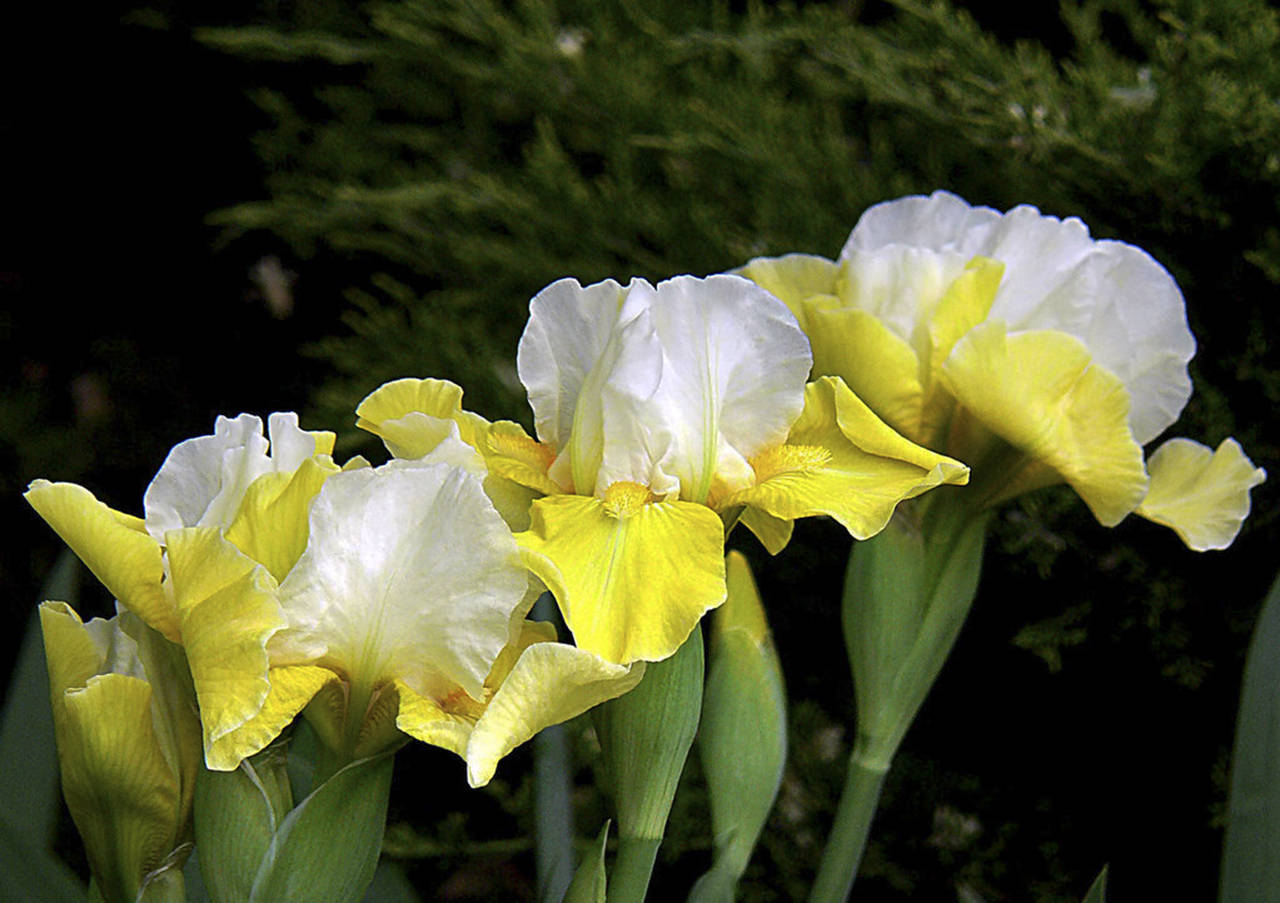By Dolores Cavanah
WSU Master Gardener
A few weeks ago, I described the “G” (geranium) and “H” (hosta), which are on my list of favorite plants. Continuing through the alphabet, here today we have “I” for iris.
The iris is named after the Greek goddess of rainbows, who rode on the borders of rainbows — hence the many magical colors of the iris. The iris bloom has been the symbol of monarchs and royal families throughout history, many adapting the “fleur de lis” as their emblem.
Within the 200 to 350 species, which vary in flower color, form, cultural needs and blooming period, are the most popular and commonly known as the bearded Iris germanica, which come in spectacular colors, due to constant hybridization. They also happen to be the most widely sold. In the germanica group, there are three categories: bearded, beardless and crested. With the bearded categories, each fall (which is a rather arching, drooping petal) has an adornment resembling a fuzzy caterpillar. With the beardless iris, each fall is smooth, and with the crested iris, each fall has a comb like ridge instead of a full beard.
Iris flowers are showy and complex in structure. The three inner segments are petals, either erect or arching — or they may flare to horizontal. The three outer segments are petal-like sepals and are held at various angles.
The iris is native to many parts of the world. An extensive part of the Western U.S. and the Pacific Coast in Zones 2 through 9 are home to native iris.
Irises grow from rhizomes and sometimes bulbs (Iris reticulata is one example of a bulbous iris). Leaves are sword like or grass like; many flowers are fragrant, showy and complex in structure. Most iris are perennial; they are hardy, reliable, attract hummingbirds, butterflies, and mostly flower in spring and early summer. All like full sun, and some like well-drained soil, some like standing in water and some like more of a desert type soil — lean and dry.
Iris siberica is one of the favorites in my garden, because they are the easiest to grow and require very little care, adapting well to my soil type, which is predominately acid/clay.
Siberians have no beard but are loved for the delicate blooms coming in a range of colors: purple, blue, pink, lavender, yellow, white, and duo- and tritones. They make a lovely cut flower.
The Siberians generally grow 2 to 4 feet tall with soft grass like foliage. After a few years, when large clumps form, they can be divided to ensure continued bloom. The divisions then can quickly fill empty spaces in the garden.
Another one of my favorite irises is the Japanese iris, the Iris ensata. Native to Japan, these irises are among the most elegant and breath-taking irises. The spectacular blooms are 4-12 inches across on slender stems up to 2-3 feet tall. The flower shapes are basically flat, the singular ones have three falls, giving a triangular flat outline. The double blossoms have standards (petals that stand upright) marked like the falls and about the same shape and size, resulting in a circular flower outline. The breathtaking, vibrant colors are purple, violet, pink, rose and white.
The Japanese iris needs moisture during the growing flowering period. Acid to neutral soil and water are necessary. In my garden they are planted in plastic containers and placed in shallow parts of the pond, quite spectacular with the blooms and pads of water lilies.
With so many varieties, take some time to look at a catalog or search online for what may become your favorite iris.
This article, by Master Gardener Dolores Cavanah, is part of an occasional series in which she describes the plants she most admires at her expansive garden at Schafer Meadows, east of Montesano. To learn more about the WSU Master Gardener Program in Grays Harbor and Pacific Counties, visit PNWMG.org.


